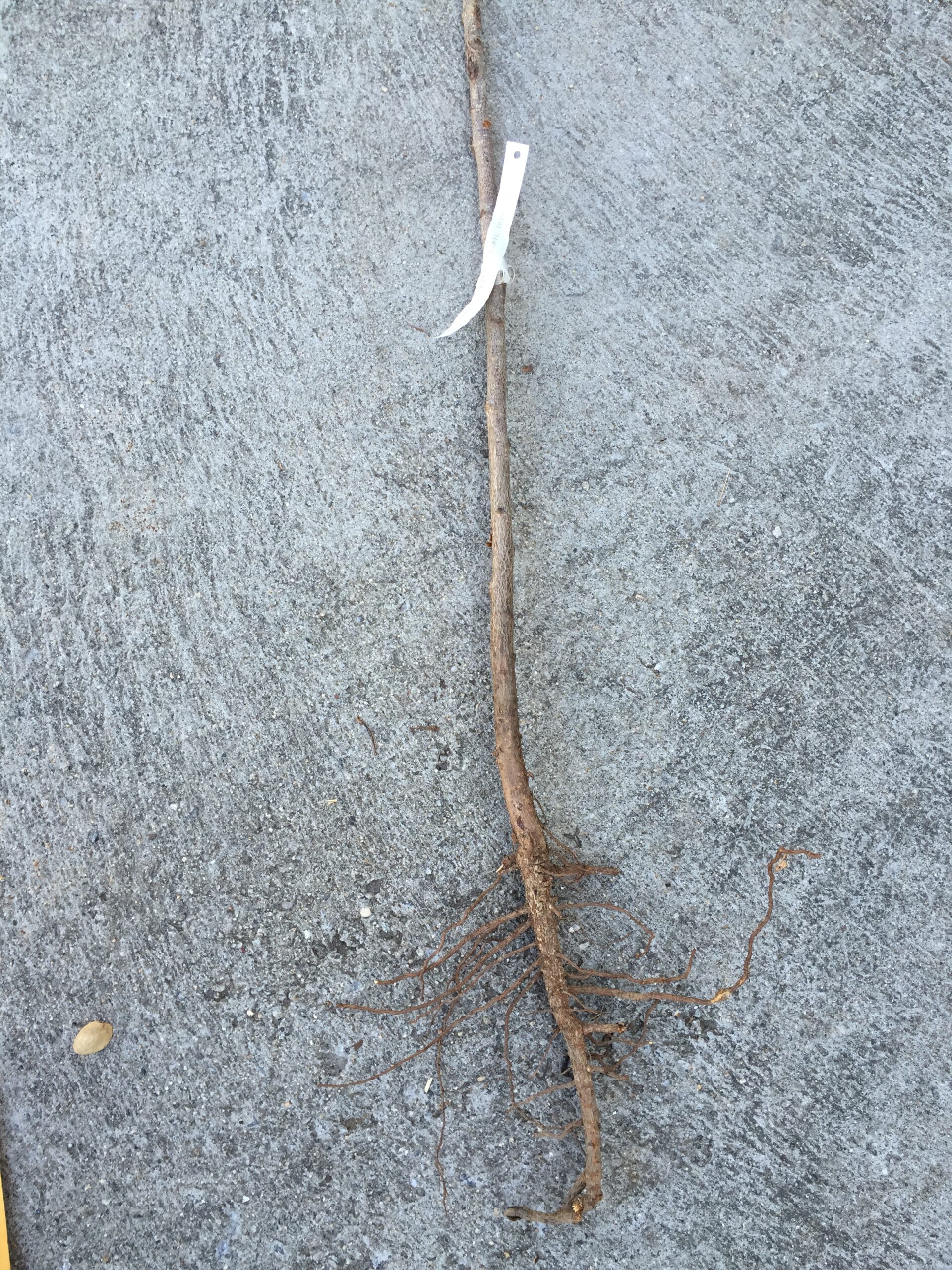They often come in the mail. They’re cheaper to buy. They’re lighter to ship. They’re easier to plant. They require less plastic packaging. They’ll never be rootbound. They arrive with all of their stringy roots. They ARE in fact sticks. But they’re also dormant or ‘still sleeping’ baby plants with some roots on their end and without the soil they originally grew in. Buying them saves everyone time, resources and money.
The Catch? You must treat them with care:
They must be planted as soon as you can get a shovel into the ground where they are being planted.
Until then, they must stay cold to stay dormant/’asleep’. Keep them outside but protected from crazy cold snaps. They can be in an unheated garage or shed.
AND you must keep their roots moist. But they cannot be submerged in water.
I love bare-root plants for all the above reasons in addition to the fact that bare root plants have 90-100% of their roots. Whereas larger shade trees for example, most often are dug, balled and burlapped with no more than 10% of the tree’s original roots. This means that a dug tree is in shock for several years re-growing the roots it needs to survive long before it can add new growth. Container plants are often restricted by their pots and if we’re not careful, we transplant them into the ground with the same tangled, rootbound condition that they were in in the pot. Then there’s the fact that sometimes plants simply do not thrive where we plant them. I would much rather have a $10 bare-root Oak Tree die than a several hundred or thousand dollar version (tree + labor). Wouldn’t you too?
MORE RESOURCES
https://www.umass.edu/urbantree/factsheets/24bareroottreeplanting.html
Nina Bassuk. 2000. “Creating the urban forest: the bare root method.” Ithaca, NY: Cornell University, or the NH State Forest.

